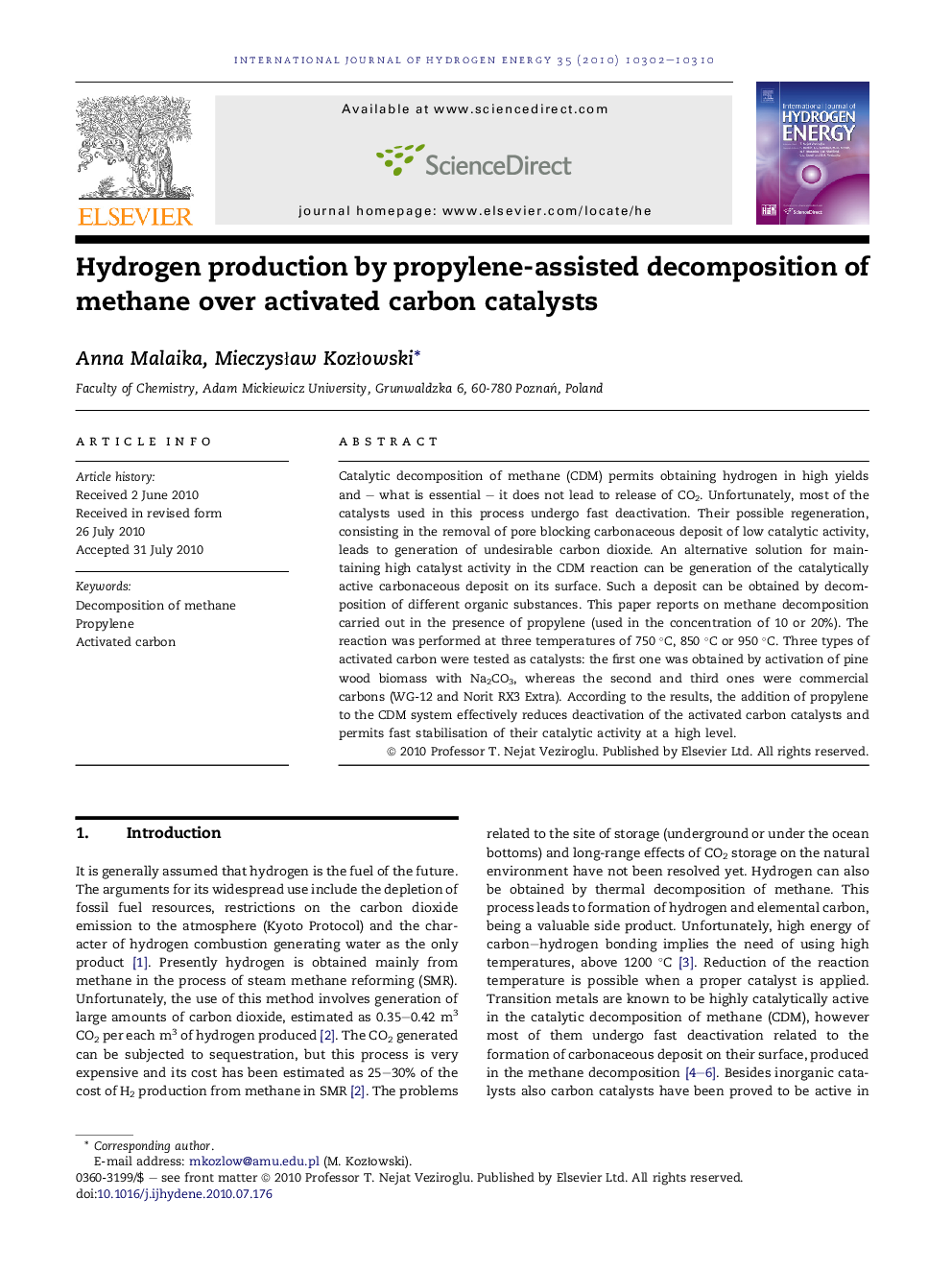| Article ID | Journal | Published Year | Pages | File Type |
|---|---|---|---|---|
| 1280084 | International Journal of Hydrogen Energy | 2010 | 9 Pages |
Catalytic decomposition of methane (CDM) permits obtaining hydrogen in high yields and – what is essential – it does not lead to release of CO2. Unfortunately, most of the catalysts used in this process undergo fast deactivation. Their possible regeneration, consisting in the removal of pore blocking carbonaceous deposit of low catalytic activity, leads to generation of undesirable carbon dioxide. An alternative solution for maintaining high catalyst activity in the CDM reaction can be generation of the catalytically active carbonaceous deposit on its surface. Such a deposit can be obtained by decomposition of different organic substances. This paper reports on methane decomposition carried out in the presence of propylene (used in the concentration of 10 or 20%). The reaction was performed at three temperatures of 750 °C, 850 °C or 950 °C. Three types of activated carbon were tested as catalysts: the first one was obtained by activation of pine wood biomass with Na2CO3, whereas the second and third ones were commercial carbons (WG-12 and Norit RX3 Extra). According to the results, the addition of propylene to the CDM system effectively reduces deactivation of the activated carbon catalysts and permits fast stabilisation of their catalytic activity at a high level.
